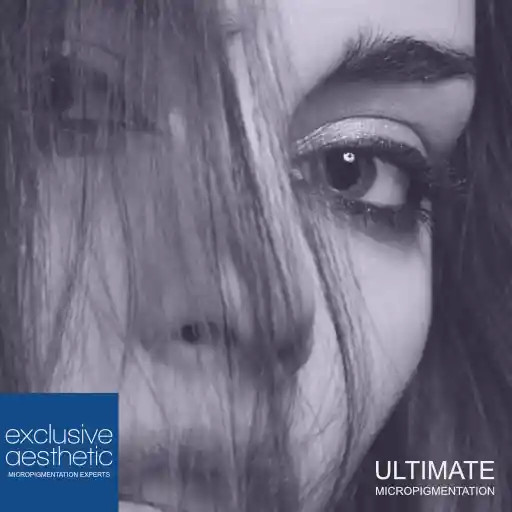What are the contraindications to having semi-permanent makeup?
What are the contraindications to having semi-permanent makeup? Discover the essential contraindications for semi-permanent makeup, ensuring a safe and informed decision for your beauty enhancements. Learn more about potential risks and considerations.
Contents
Introduction
Understanding Semi-Permanent Makeup Contraindications
Health Conditions
Medication and Treatment
Pre-Procedure Assessments and Consultation
Skin Sensitivity Tests
Medical History Review
Potential Risks and Complications
FAQs
- Are there any age restrictions for semi-permanent makeup?
- How long does semi-permanent makeup last?
- Can pregnant or breastfeeding individuals undergo semi-permanent makeup?
- What should I expect during the healing process after semi-permanent makeup?
- Is semi-permanent makeup suitable for everyone?
- Can I remove semi-permanent makeup if I’m not satisfied with the results?
Conclusion

Introduction
Semi-permanent makeup has gained immense popularity recently because it enhances natural beauty with long-lasting results. However, it’s crucial to understand the contraindications associated with this cosmetic procedure to ensure safety and optimal outcomes. This comprehensive guide delves into the various contraindications individuals should consider before opting for semi-permanent makeup.
Understanding Semi-Permanent Makeup Contraindications
Before undergoing semi-permanent makeup procedures, assessing individual health factors and potential risks is vital. Here’s a detailed exploration of the contraindications associated with semi-permanent makeup:
Health Conditions
Individuals with certain health conditions may not be suitable candidates for semi-permanent makeup. Conditions such as:
- Diabetes: Individuals with uncontrolled diabetes may experience delayed wound healing, increasing the risk of complications post-procedure.
- Autoimmune Disorders: Conditions like lupus or rheumatoid arthritis may result in unpredictable healing responses, affecting the outcome of semi-permanent makeup.
- Skin Disorders: Pre-existing skin conditions such as eczema, psoriasis, or dermatitis can interfere with healing and lead to adverse reactions.
Semi-permanent makeup procedures involve the insertion of pigment into the skin, making it essential for individuals to disclose any underlying health issues to their practitioner for a thorough assessment.
Medication and Treatment
Certain medications and treatments can impact the body’s response to semi-permanent makeup. Considerations include:
- Blood Thinners: Individuals taking blood-thinning medications may experience prolonged bleeding during the procedure, increasing the risk of bruising and complications.
- Chemotherapy: Patients undergoing chemotherapy may have compromised immune systems and impaired healing, making them unsuitable candidates for semi-permanent makeup until their treatment is complete and their health status stabilises.
- Skin Treatments: Recent skin treatments such as chemical peels, laser therapy, or microdermabrasion can affect the skin’s integrity, requiring adequate healing time before undergoing semi-permanent makeup procedures.
Pre-Procedure Assessments and Consultation
Before scheduling a semi-permanent makeup procedure, individuals should undergo thorough assessments and consultations with qualified practitioners. Key considerations include:
Skin Sensitivity Tests
Practitioners may conduct skin sensitivity tests to identify potential allergic reactions to pigments or anaesthetics during the procedure. These tests help ensure the safety and suitability of each individual’s semi-permanent makeup.
Medical History Review
During consultations, practitioners review patients’ medical histories to identify contraindications or risk factors that may affect the procedure’s outcomes. Honest disclosure of medical conditions, medications, and previous treatments is essential for personalised recommendations and risk management.
Potential Risks and Complications
While semi-permanent makeup offers numerous benefits, it’s essential to be aware of potential risks and complications, including:
- Infection: Improper sterilisation techniques or inadequate post-procedure care can lead to bacterial or viral infections, causing discomfort and requiring medical intervention.
- Allergic Reactions: Some individuals may experience allergic reactions to the pigments or numbing agents used during the procedure, resulting in itching, swelling, or redness.
- Uneven Pigment Distribution: Factors such as improper technique or poor healing can lead to uneven pigment distribution, requiring touch-up sessions to achieve desired results.
FAQs (Frequently Asked Questions – What are the contraindications to having semi-permanent makeup?)
Are there any age restrictions for semi-permanent makeup?
There are generally no specific age restrictions for semi-permanent makeup procedures. However, individuals under 18 may require parental consent, and practitioners may assess suitability based on individual circumstances.
How long does semi-permanent makeup last?
Semi-permanent makeup typically lasts one to three years, depending on skin type, lifestyle, and aftercare practices.
Can pregnant or breastfeeding individuals undergo semi-permanent makeup?
While there’s limited research on the safety of semi-permanent makeup during pregnancy or breastfeeding, it’s generally recommended to avoid cosmetic procedures during this time due to hormonal changes and potential risks.
What should I expect during the healing process after semi-permanent makeup?
The healing process varies for each individual but typically involves initial redness, swelling, and slight discomfort. Practitioners provide post-procedure care instructions to promote proper healing and optimal results.
Is semi-permanent makeup suitable for everyone?
While semi-permanent makeup is safe for most individuals, thorough consultations and assessments are essential to ensure suitability based on individual health, skin type, and lifestyle factors.
Can I remove semi-permanent makeup if I’m not satisfied with the results?
Yes, semi-permanent makeup can be removed using laser tattoo removal techniques. However, consulting with experienced practitioners is essential to discuss the risks and potential outcomes of removal procedures.
Conclusion – What are the contraindications to having semi-permanent makeup?
Understanding the contraindications associated with semi-permanent makeup is crucial for making informed decisions about cosmetic procedures. By considering individual health factors, medication use, and potential risks, individuals can ensure a safe and satisfying experience with semi-permanent makeup enhancements.
Micropigmentation training by the industry expert with 35+ years’ experience.
What are the contraindications to having semi-permanent makeup?
Links To Our UK Services
- Homepage
- SPMU Training
- Foundation SPMU Training
- Tattoo Removals Training
- Eyebrow Tattoo Training
- Lip Blush Training
- Medical Micropigmentation Training
- Scalp Micropigmentation Training
- Areola Tattoo Training
- Scar Removal Training
- Skin Rejuvenation Training
- All Training Courses
What are the contraindications to having semi-permanent makeup?
GET IN TOUCH
If you would like to enquire about one of our training courses or treatments, message us using the floating widget (bottom right of the page), and we will contact you to discuss the next step.
Prefer to discuss using WhatsApp? Please get in touch with Candice using the number below.
What are the contraindications to having semi-permanent makeup?
We support the NHS.

